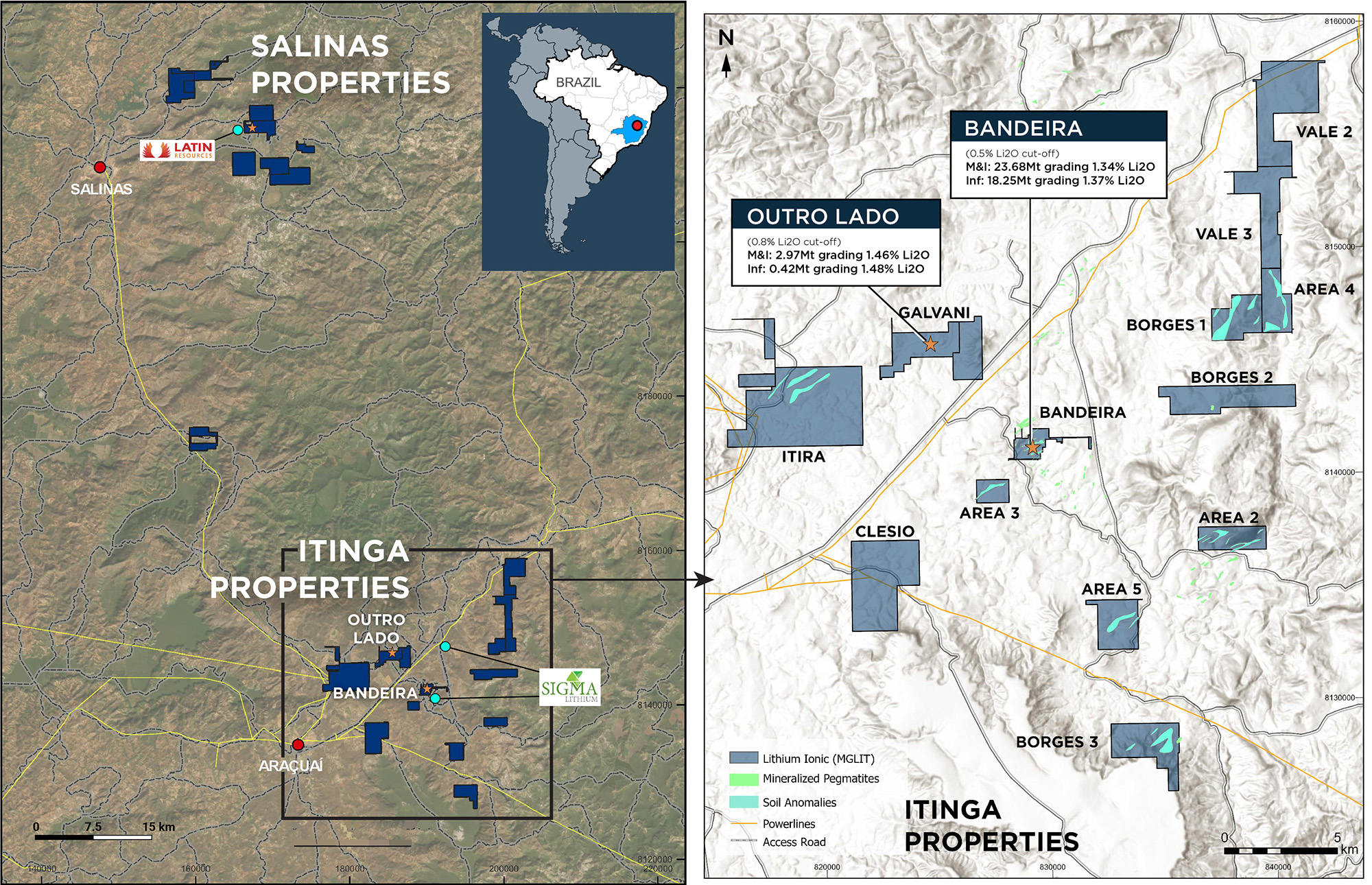I agree to and consent to receive news, updates, and other communications via email from Lithium Ionic. I understand that I may withdraw consent at any time by clicking the unsubscribe link contained in all emails from [email protected].
The Itinga properties are located in one of the largest lithium-bearing pegmatite populations in the world.
Lithium Ionic’s Itinga properties are located in the mining-friendly state of Minas Gerais, in the southeast region of Brazil, within the Araçuaí Pegmatite District (APD), in the municipalities of Araçuaí and Itinga.
The APD, located within the Eastern Brazilian Pegmatite Province (EBPP), represents one of the largest lithium-bearing pegmatite populations in the world. This region has emerged as a globally significant producer of high-purity lithium with increasing spodumene concentrate production at CBL’s Cachoeira Mine and Sigma Lithium Corp.’s Grota do Cirilo mine. These lithium mines are located in proximity to Lithium Ionic's two main NI 43-101 compliant lithium deposits: the feasibility-level Bandeira project and the Outro Lado deposit.
BANDEIRA LITHIUM PROJECT
The Company began drilling Bandeira in April 2022, reporting an initial mineral resource estimate (“MRE”) in June 2023. A PEA was completed for the Project in October 2023, followed by a Feasibility Study in May 2024, which supported a robust project with strong economic viability, featuring a small footprint underground mine, an efficient and straightforward processing circuit, and a safe, sustainable dry stack tailings facility. The study demonstrated a 14-year, low-cost mining operation producing 178,000tpa of high-quality spodumene concentrate (5.5% Li2O), resulting in a post-tax NPV8 of US$1.3B and an IRR of 40%.
Measured & Indicated:
23.68Mt grading 1.34% Li2O (787kt LCE)
Inferred:
18.25Mt grading 1.37% Li2O (617kt LCE)
Near-term Catalysts:
- Construction permit (Environmental and Installation License, “LAC”, or Licença Ambiental Concomitante) expected in H2 2024.
OUTRO LADO LITHIUM DEPOSIT
An initial mineral resource estimate for Outro Lado was reported on June 27, 2023, which considered drill data from 61 holes (7,659 metres). See the press release related HERE or the technical report HERE.
Measured & Indicated:
2.97Mt grading 1.46% Li₂O (108kt LCE)
Inferred:
0.42Mt grading 1.48% Li₂O (15kt LCE)

